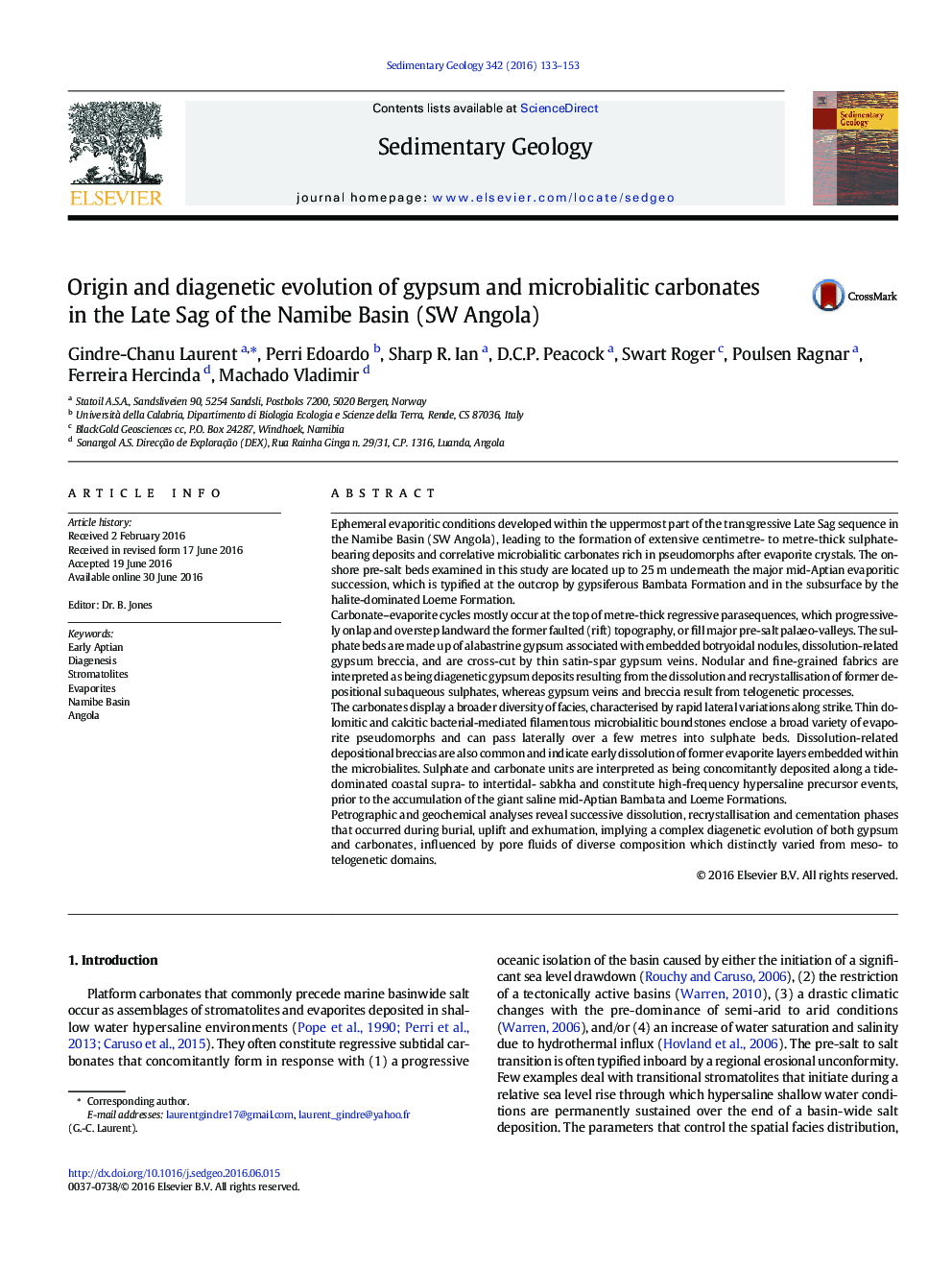| کد مقاله | کد نشریه | سال انتشار | مقاله انگلیسی | نسخه تمام متن |
|---|---|---|---|---|
| 4688986 | 1636021 | 2016 | 21 صفحه PDF | دانلود رایگان |

Ephemeral evaporitic conditions developed within the uppermost part of the transgressive Late Sag sequence in the Namibe Basin (SW Angola), leading to the formation of extensive centimetre- to metre-thick sulphate-bearing deposits and correlative microbialitic carbonates rich in pseudomorphs after evaporite crystals. The onshore pre-salt beds examined in this study are located up to 25 m underneath the major mid-Aptian evaporitic succession, which is typified at the outcrop by gypsiferous Bambata Formation and in the subsurface by the halite-dominated Loeme Formation.Carbonate–evaporite cycles mostly occur at the top of metre-thick regressive parasequences, which progressively onlap and overstep landward the former faulted (rift) topography, or fill major pre-salt palaeo-valleys. The sulphate beds are made up of alabastrine gypsum associated with embedded botryoidal nodules, dissolution-related gypsum breccia, and are cross-cut by thin satin-spar gypsum veins. Nodular and fine-grained fabrics are interpreted as being diagenetic gypsum deposits resulting from the dissolution and recrystallisation of former depositional subaqueous sulphates, whereas gypsum veins and breccia result from telogenetic processes.The carbonates display a broader diversity of facies, characterised by rapid lateral variations along strike. Thin dolomitic and calcitic bacterial-mediated filamentous microbialitic boundstones enclose a broad variety of evaporite pseudomorphs and can pass laterally over a few metres into sulphate beds. Dissolution-related depositional breccias are also common and indicate early dissolution of former evaporite layers embedded within the microbialites. Sulphate and carbonate units are interpreted as being concomitantly deposited along a tide-dominated coastal supra- to intertidal- sabkha and constitute high-frequency hypersaline precursor events, prior to the accumulation of the giant saline mid-Aptian Bambata and Loeme Formations.Petrographic and geochemical analyses reveal successive dissolution, recrystallisation and cementation phases that occurred during burial, uplift and exhumation, implying a complex diagenetic evolution of both gypsum and carbonates, influenced by pore fluids of diverse composition which distinctly varied from meso- to telogenetic domains.
Journal: Sedimentary Geology - Volume 342, 1 August 2016, Pages 133–153